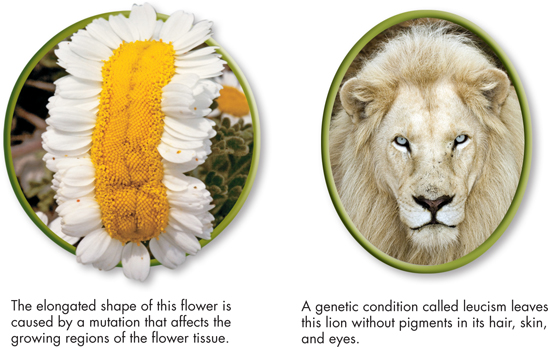13.3 Mutations
 What are mutations?
What are mutations? How do mutations affect genes?
How do mutations affect genes?
mutation • point mutation • frameshift mutation • mutagen • polyploidy
Preview Visuals Before you read, look at Figures 13–11 and 13–12. As you read, note the changes produced by various gene and chromosomal mutations.
THINK ABOUT IT The sequence of bases in DNA are like the letters of a coded message, as we've just seen. But what would happen if a few of those letters changed accidentally, altering the message? Could the cell still understand its meaning? Think about what might happen if someone changed at random a few lines of code in a computer program that you rely on. Knowing what you already do about the genetic code, what effects would you predict such changes to have on genes and the polypeptides for which they code?
Types of Mutations
 What are mutations?
What are mutations?
Now and then cells make mistakes in copying their own DNA, inserting the wrong base or even skipping a base as a strand is put together. These variations are called mutations, from the Latin word mutare, meaning “to change.”  Mutations are heritable changes in genetic information.
Mutations are heritable changes in genetic information.
Mutations come in many different forms. Figure 13–10 shows two of the countless examples. But all mutations fall into two basic categories: Those that produce changes in a single gene are known as gene mutations. Those that produce changes in whole chromosomes are known as chromosomal mutations.

Table of Contents
- Formulas and Equations
- Applying Formulas and Equations
- Mean, Median, and Mode
- Estimation
- Using Measurements in Calculations
- Effects of Measurement Errors
- Accuracy
- Precision
- Comparing Accuracy and Precision
- Significant Figures
- Calculating With Significant Figures
- Scientific Notation
- Calculating With Scientific Notation
- Dimensional Analysis
- Applying Dimensional Analysis





